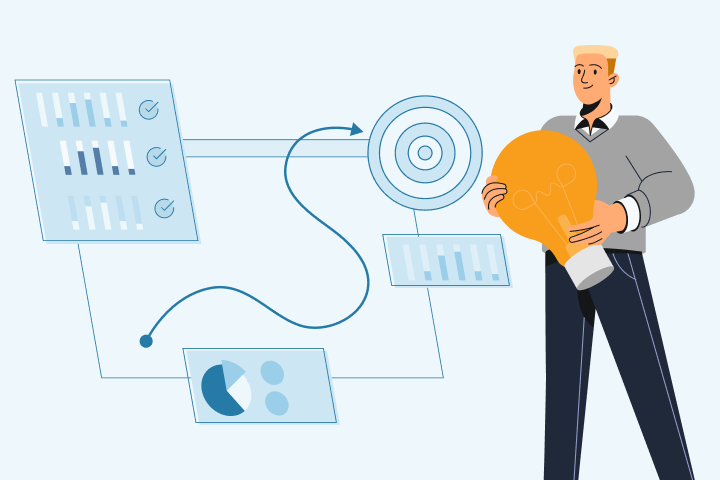Personal Branding for Employees: Step-by-Step Guide
Think about all the industry influencers you follow – now imagine they all work for your company.
Your brand would have access to a new network of loyal followers to develop partnerships, maximize promotional efforts, and elevate your brand image.

Hiring thought leaders would also help you create a culture of top performers that would attract the next top talent.
Fortunately, it's possible to turn your workforce into a group of respected industry thought leaders.
So, in this post, we'll define employee personal branding, dive deeper into how it benefits brands, and discuss how you can create an employee advocacy strategy to support employees in building their own personal brands.
What Is Personal Branding for Employees?
Personal branding for employees is the process of an employee building their own audience and influence in a particular industry. Personal branding strategies usually involve sharing content on social media, YouTube, newsletters, and other creator platforms to build an audience.
Employees benefit from a strong personal brand as it gives them access to a larger network and more professional opportunities.
Many brands worry that these professional opportunities could cause star employees to leave the company.
However, assuming your company has a culture that supports employee growth, many industry leaders are content to stay at their current company. In fact, top performers are more likely to stay with your company (and attract more top talent) if you build a culture that encourages career growth.
In addition, the benefits of employee advocacy for brands are immense. We'll discuss them in more detail below.
How Brands Benefit From Employee Personal Branding
Below we’ll discuss how employee personal branding benefits brands.
Maximize Promotional Efforts
If employees have a loyal audience, your brand can easily tap into that network to promote branded content, product launches, company news, and other key messages. Just ask them to share your initiatives.
Here's a great example of how employees can promote brand initiatives for you:
It's similar to influencer marketing but even better because you don't have to scout influencers, hire them, and ensure they accurately position the company brand.
Instead, you just need to ask your employees to share the relevant message.
You can offer employees an incentive to share company content with their audiences, and it is still much more cost-effective than hiring an influencer.
Elevate Brand Image
If there's an influencer you greatly respect, you probably also have a positive impression of their employer's brand.
So, employee personal branding can boost your brand image by association.
In addition, if employees have a strong thought leadership presence, they're much more likely to receive speaking opportunities at conferences, be invited on podcasts, and contribute to industry publications. As a result, your company receives high-quality brand awareness for free.
For example, the Chief Revenue Officer of Leadfeeder spoke at SaaStock, which indirectly gave Leadfeeder some credible brand awareness:
Recruit Top Talent
Top performers surround themselves with other top performers, so you'll organically attract great talent if your employees are considered thought leaders.
If you already have several employees with strong personal brands, there's a good chance some of their audience are high-quality passive job seekers. So, simply asking your employees to create a post about the position could generate a stream of high-quality candidates.
To illustrate how much easier it is to recruit talent when your employees have strong personal brands, check out this post published by Ahrefs CMO Tim Soulo. It generated over 100 retweets, nearly 500 likes, and many interested comments:
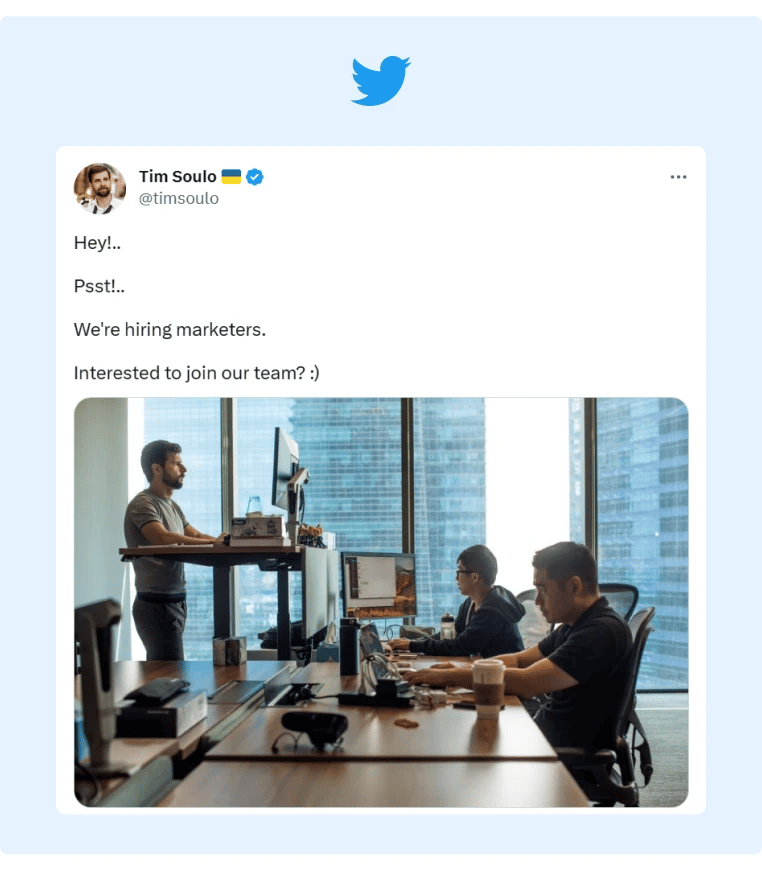
Create a Company Culture of Excellence
While many employers struggle to combat quiet quitting, brands with a culture of employee advocacy naturally avoid this issue as employees receive inspiration (and even a little competitive motivation) from their co-workers who are actively investing in personal branding.
Employee advocacy shifts employee goals from receiving a paycheck to building a thriving career. As a result, you'll have a much more engaged work environment that supports A-players and produces better company results.
In addition, when you support and encourage your employees' career growth, they're more likely to remain loyal to your brand, knowing they'll have more opportunities if they continue to grow.
Maximize Sales and Brand Partnerships
People tend to trust other people more than they trust brands. Your brand can use this to its advantage by asking employees to be brand ambassadors and leverage social selling techniques to generate sales and form brand partnerships.
For example, WGroup built a $2 million sales pipeline solely through employee advocacy. It also helped them generate more brand awareness and further solidify themselves as industry leaders.
How To Help Employees Build a Personal Brand Through Employee Advocacy
Most employers buy into the idea of employee personal branding after realizing the immense benefits for brands.
However, you'll quickly realize that it's tricky to implement a culture of employee advocacy.
Sending a Slack message or email to your employees telling them to "create a personal branding strategy" is overwhelming as most don't know where to start, and those who do try give up after a few weeks.
To make it easy for employees to create thought leadership content consistently, we'll lay out a simple step-by-step employee advocacy strategy you can implement to make it easy for employees to build their own personal brands.
While you can execute this process manually, we'll show you how to do it with GaggleAMP's automation tool.
Step 1: Optimize Social Media Profiles
Before asking employees to immediately jump into personal branding, ensure they have well-optimized social media profiles.
To keep it simple, we typically recommend employees focus on just one social media platform. For most B2B companies, this means optimizing a LinkedIn profile. Make sure employees follow basic guidelines like:
-
Get a decent headshot.
-
Create a captivating bio that describes their experiences and accomplishments.
-
Ask for endorsements from colleagues and other professional connections.
-
Upload a cover photo (ideally one with corporate branding).
If you're focusing on a different social media platform, provide specific instructions for employees to follow.
Step 2: Provide Content Education and Guidelines
Once your employees have optimized social media profiles, provide social media policies and guidelines. Many employees are hesitant to post anything on social media because they're worried it might be off-brand and could cost them their job.
So, providing clear policies makes employees feel more at ease engaging on social media. If you want some guidelines for creating a social media policy, we have a resource for that!
Next, offer some basic content marketing education so they can learn how to craft compelling posts. For example, teach them:
-
How to come up with winning topic ideas.
-
How to craft a hook.
-
How to use different types of media.
-
Basic optimization tips (using hashtags, structuring posts, etc.).
You can also give them this list of excellent LinkedIn post examples for inspiration.
Step 3: Create an Engagement Activity
Many employees never create content because they don't know how to start. To help them move past this stage and publish their first piece of content, you can create a specific engagement activity (like, comment, share, etc.) for a particular platform (LinkedIn, Twitter, Facebook, etc.).
GaggleAMP makes this super easy as it offers engagement activities curated by a member of your team:
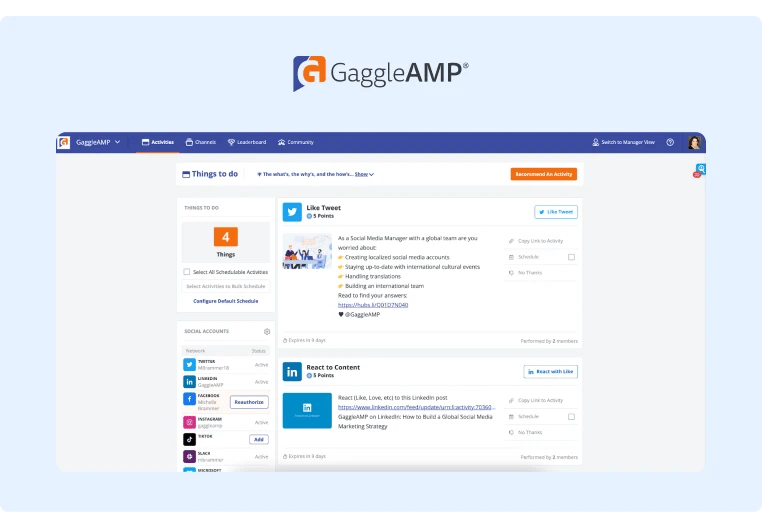
One of GaggleAMP's engagement activities is a Question prompt.
This is useful for building thought leadership content (rather than just promoting branded content) as you can write a helpful prompt like:
-
How do you foresee (newsworthy topic) changing our industry in the next six months?
-
What's one experiment you ran internally this month, and what did you learn from it?
-
What's an interesting conversation you had this month that shifted your opinion of a topic?
-
What's an internal strategy/template you use that your followers might enjoy?
-
What's a contrarian viewpoint that you have on (topic)?
These prompts help your employees get started rather than staring at a blank page, which can significantly improve engagement rates.
Step 4: Customize Engagement Activities
Now that you’ve selected an engagement activity, you can add specific instructions, like the question prompts above or even pre-written text.
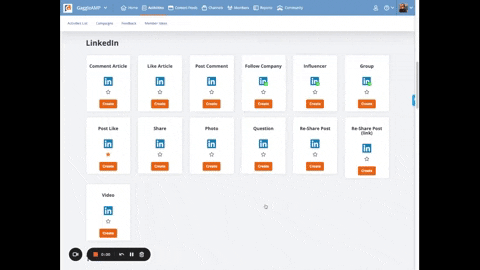
Then, add an end date.
Once that end date passes, GaggleAMP automatically removes it from the employee's assignment list (even if it's incomplete).
The benefits of end dates are that:
-
They motivate employees to promptly complete that task.
-
They ensure that employees never log into their Gaggle and see an overwhelming list of tasks, which could deter them from completing any of the tasks.
-
Keeps time bound items like events and webinars from being posted after the event has occurred.
Step 5: Assign the Engagement Activity
A key reason GaggleAMP tends to increase employee engagement is that social media managers can assign personalized engagement activities at scale.
It's easy for employees to ignore mass Slack messages or emails, and it's too time-consuming to send all of them individual messages with personalized engagement requests.
So, GaggleAMP solves this problem by allowing you to assign a specific engagement activity to a single employee (or multiple employees) by simply checking the box next to their name:
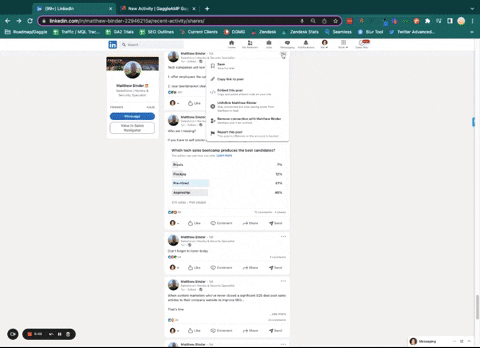
Alternatively, you can create a group of employees, like executives, the marketing team, or the sales team. Then, you can assign an engagement activity to that group of individuals.
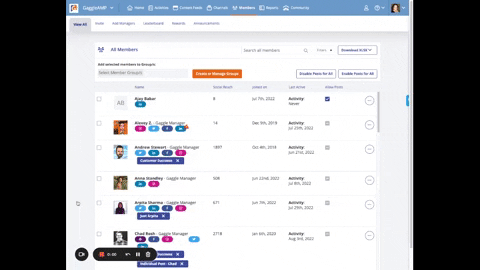
Employees still receive a personalized engagement assignment with tailored instructions, but you don’t have to individually send personalized messages.
Step 6: Employees Complete the Activity and Schedule It To Publish
After you assign the engagement activity, employees will receive a notification that they have an engagement activity waiting in the Gaggle.
When they log into the Gaggle, they'll see the engagement assignment and your instructions.

For most assignments, employees can complete them directly inside the platform and even schedule them to publish at a future time and date.
This way, they only have to spend a few minutes once per week scheduling content rather than constantly logging into various social media platforms several times per week to create and post content.
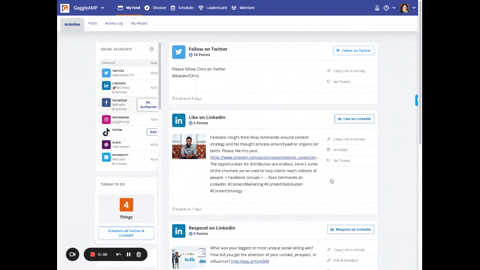
As each assignment has an end date, you’ll never have to worry about overwhelming employees with a backlog of to-dos, which helps increase engagement rates.
We have an additional resource on how you can create a content marketing strategy for your employee advocacy program if you want more detailed advice for this process.
Step 7: Measure Employee Engagement Reward Top Performers
Finally, you can easily track employee engagement and the ROI of your employee advocacy efforts directly in the GaggleAMP dashboard.
First, look at the analytics dashboard. You’ll be able to see:
- Total reach.
- Clicks.
- Shares.
- Each employee's engagement.
- Estimated earned media value.
This makes it easy to gauge how employee advocacy impacts your bottom line and even identify the top-performing posts.
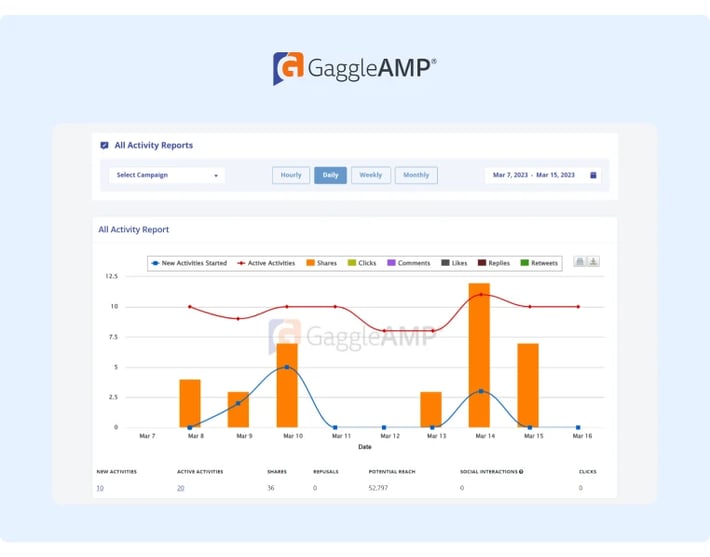
In addition to measuring critical analytics to improve your employee advocacy program, you can also make it fun for employees and reward their engagement with GaggleAMP's gamification features.
The public leaderboard ranks employees by engagement points earned (employees can receive points for completed engagement activities). This ignites friendly competition and further encourages employee engagement.
You can also offer rewards (like an Amazon gift card or bonus) to the top-ranking employees or those who pass a certain threshold of engagement points.
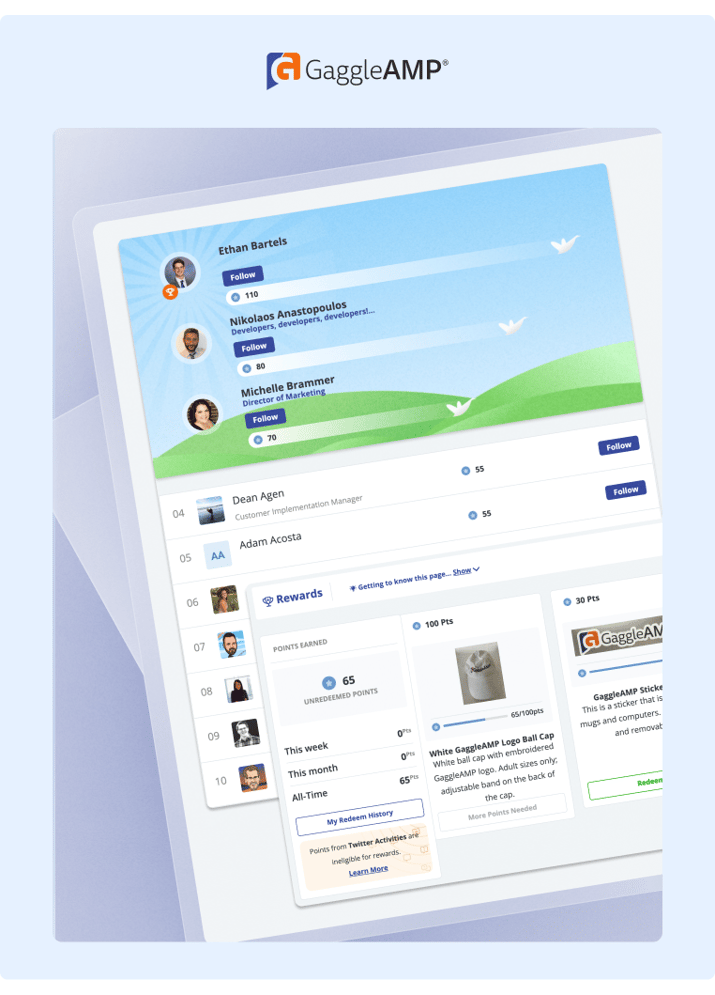
Start Building Your Employee Advocacy Program Today
As marketing becomes increasingly competitive and relies more heavily on personal relationships and networking, your individual employees' networks will become an invaluable asset to your brand.
So, use the tips above to build your employer brand and create a more engaged workforce that supports employee growth.
While you can manually execute all the steps above, consider using GaggleAMP to automate the process and allocate your time to higher-level tasks.
To see for yourself how GaggleAMP can help, schedule a demo today!





